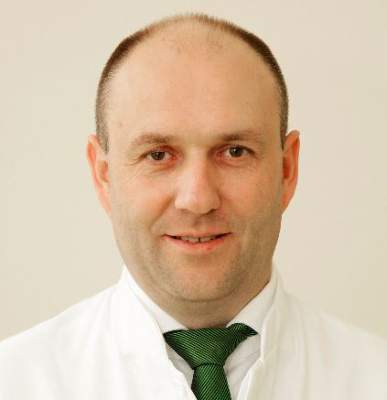User login
Patients with juvenile myoclonic epilepsy tend to have similar or better quality-of-life scores in adulthood in comparison with patients with absence epilepsy, except when there are comorbid psychiatric conditions, according to findings from a case-control study.
“In contrast to previous findings on social outcome in JME [juvenile myoclonic epilepsy], we demonstrated that the overall psychosocial outcome in the current JME patients was generally satisfying and – likewise important – did not differ from patients with absence epilepsy,” wrote the authors, including lead investigator, Dr. Martin Holtkamp, medical director at the Epilepsy Center Berlin-Brandenburg, Germany.
The findings showed that when compared with patients who had been diagnosed with childhood or juvenile absence epilepsy (AE), those with juvenile myoclonic epilepsy (JME) in their mid-40s were as likely or more likely to have a college degree, steady employment, and full integration into their social context.
“At the end of follow-up, we found only one variable to be significantly different comparing psychosocial long-term outcome in JME and AE patients,” Dr. Holtkamp and his colleagues wrote. That variable was that nearly three-quarters of JME patients had either qualified for or achieved a university education, whereas only 34.1% of AE patients had done so (P = .001).
The investigators retrospectively analyzed the records of 41 adult JME patients and 41 adult AE patients whose first treatment contact occurred at the neurology department at the Charity University Hospital Berlin between 1955 and 2000. All patients included in the study had been diagnosed with their subsyndrome of epilepsy for at least 20 years (Epilepsia 2014 Sept. 10 [doi:10.1111/epi.12751]).
Patients in each group were contacted and asked to complete a questionnaire about their education, professional situation, family and social life, as well as their psychiatric conditions and any medications used to treat them. Each group was also asked to complete the validated Quality of Life in Epilepsy Inventory 31 survey (in German).In the JME group, in which the mean age was 60.7 years (standard deviation, 13.1 years) and average time from diagnosis to follow-up was 45 years, the overall psychosocial long-term outcome was positive and quality-of-life was high when compared with controls. In the JME group, 80.5% reported never having been unemployed for more than a year, 70% reported access to higher learning, and 80% also reported their financial situation as either wealthy or sufficient. Overall, 90% of patients with JME reported they were well integrated into their social contexts.
The control group, in which the mean age was 61 years (SD, 12.9 years) and follow-up time was 45 years, also reported a 90% rate of integration into their social contexts, although only 73.2% reported never having been unemployed for more than a year, and only 75.6% reported a healthy financial situation.
Nearly a quarter of JME patients reported current or previous psychiatric comorbidity, such as depression or anxiety, compared with 22% of controls. At the time of follow-up, the JME group reported significantly more antiepileptic monotherapy (83.3%), compared with controls (48.4%, P = .004).
The investigators noted that despite its low case numbers, the study’s long follow-up time suggested that “specific neurobiologic alterations in JME, if they exist at all, do not contribute in a primary fashion to psychosocial outcome.”
Dr. Holtkamp disclosed that he has received funds from several pharmaceutical companies, including Desitin Arzneimittel, GlaxoSmithKline, UCB, and others. He is on the advisory boards of several industry entities, including Eisai and Janssen.
On Twitter @whitneymcknight
Patients with juvenile myoclonic epilepsy tend to have similar or better quality-of-life scores in adulthood in comparison with patients with absence epilepsy, except when there are comorbid psychiatric conditions, according to findings from a case-control study.
“In contrast to previous findings on social outcome in JME [juvenile myoclonic epilepsy], we demonstrated that the overall psychosocial outcome in the current JME patients was generally satisfying and – likewise important – did not differ from patients with absence epilepsy,” wrote the authors, including lead investigator, Dr. Martin Holtkamp, medical director at the Epilepsy Center Berlin-Brandenburg, Germany.
The findings showed that when compared with patients who had been diagnosed with childhood or juvenile absence epilepsy (AE), those with juvenile myoclonic epilepsy (JME) in their mid-40s were as likely or more likely to have a college degree, steady employment, and full integration into their social context.
“At the end of follow-up, we found only one variable to be significantly different comparing psychosocial long-term outcome in JME and AE patients,” Dr. Holtkamp and his colleagues wrote. That variable was that nearly three-quarters of JME patients had either qualified for or achieved a university education, whereas only 34.1% of AE patients had done so (P = .001).
The investigators retrospectively analyzed the records of 41 adult JME patients and 41 adult AE patients whose first treatment contact occurred at the neurology department at the Charity University Hospital Berlin between 1955 and 2000. All patients included in the study had been diagnosed with their subsyndrome of epilepsy for at least 20 years (Epilepsia 2014 Sept. 10 [doi:10.1111/epi.12751]).
Patients in each group were contacted and asked to complete a questionnaire about their education, professional situation, family and social life, as well as their psychiatric conditions and any medications used to treat them. Each group was also asked to complete the validated Quality of Life in Epilepsy Inventory 31 survey (in German).In the JME group, in which the mean age was 60.7 years (standard deviation, 13.1 years) and average time from diagnosis to follow-up was 45 years, the overall psychosocial long-term outcome was positive and quality-of-life was high when compared with controls. In the JME group, 80.5% reported never having been unemployed for more than a year, 70% reported access to higher learning, and 80% also reported their financial situation as either wealthy or sufficient. Overall, 90% of patients with JME reported they were well integrated into their social contexts.
The control group, in which the mean age was 61 years (SD, 12.9 years) and follow-up time was 45 years, also reported a 90% rate of integration into their social contexts, although only 73.2% reported never having been unemployed for more than a year, and only 75.6% reported a healthy financial situation.
Nearly a quarter of JME patients reported current or previous psychiatric comorbidity, such as depression or anxiety, compared with 22% of controls. At the time of follow-up, the JME group reported significantly more antiepileptic monotherapy (83.3%), compared with controls (48.4%, P = .004).
The investigators noted that despite its low case numbers, the study’s long follow-up time suggested that “specific neurobiologic alterations in JME, if they exist at all, do not contribute in a primary fashion to psychosocial outcome.”
Dr. Holtkamp disclosed that he has received funds from several pharmaceutical companies, including Desitin Arzneimittel, GlaxoSmithKline, UCB, and others. He is on the advisory boards of several industry entities, including Eisai and Janssen.
On Twitter @whitneymcknight
Patients with juvenile myoclonic epilepsy tend to have similar or better quality-of-life scores in adulthood in comparison with patients with absence epilepsy, except when there are comorbid psychiatric conditions, according to findings from a case-control study.
“In contrast to previous findings on social outcome in JME [juvenile myoclonic epilepsy], we demonstrated that the overall psychosocial outcome in the current JME patients was generally satisfying and – likewise important – did not differ from patients with absence epilepsy,” wrote the authors, including lead investigator, Dr. Martin Holtkamp, medical director at the Epilepsy Center Berlin-Brandenburg, Germany.
The findings showed that when compared with patients who had been diagnosed with childhood or juvenile absence epilepsy (AE), those with juvenile myoclonic epilepsy (JME) in their mid-40s were as likely or more likely to have a college degree, steady employment, and full integration into their social context.
“At the end of follow-up, we found only one variable to be significantly different comparing psychosocial long-term outcome in JME and AE patients,” Dr. Holtkamp and his colleagues wrote. That variable was that nearly three-quarters of JME patients had either qualified for or achieved a university education, whereas only 34.1% of AE patients had done so (P = .001).
The investigators retrospectively analyzed the records of 41 adult JME patients and 41 adult AE patients whose first treatment contact occurred at the neurology department at the Charity University Hospital Berlin between 1955 and 2000. All patients included in the study had been diagnosed with their subsyndrome of epilepsy for at least 20 years (Epilepsia 2014 Sept. 10 [doi:10.1111/epi.12751]).
Patients in each group were contacted and asked to complete a questionnaire about their education, professional situation, family and social life, as well as their psychiatric conditions and any medications used to treat them. Each group was also asked to complete the validated Quality of Life in Epilepsy Inventory 31 survey (in German).In the JME group, in which the mean age was 60.7 years (standard deviation, 13.1 years) and average time from diagnosis to follow-up was 45 years, the overall psychosocial long-term outcome was positive and quality-of-life was high when compared with controls. In the JME group, 80.5% reported never having been unemployed for more than a year, 70% reported access to higher learning, and 80% also reported their financial situation as either wealthy or sufficient. Overall, 90% of patients with JME reported they were well integrated into their social contexts.
The control group, in which the mean age was 61 years (SD, 12.9 years) and follow-up time was 45 years, also reported a 90% rate of integration into their social contexts, although only 73.2% reported never having been unemployed for more than a year, and only 75.6% reported a healthy financial situation.
Nearly a quarter of JME patients reported current or previous psychiatric comorbidity, such as depression or anxiety, compared with 22% of controls. At the time of follow-up, the JME group reported significantly more antiepileptic monotherapy (83.3%), compared with controls (48.4%, P = .004).
The investigators noted that despite its low case numbers, the study’s long follow-up time suggested that “specific neurobiologic alterations in JME, if they exist at all, do not contribute in a primary fashion to psychosocial outcome.”
Dr. Holtkamp disclosed that he has received funds from several pharmaceutical companies, including Desitin Arzneimittel, GlaxoSmithKline, UCB, and others. He is on the advisory boards of several industry entities, including Eisai and Janssen.
On Twitter @whitneymcknight
FROM EPILEPSIA
Key clinical point: Patients with juvenile myoclonic epilepsy generally have a long-term quality-of-life that is generally equal to or better than patients with childhood or juvenile absence epilepsy.
Major finding: Adult juvenile myoclonic epilepsy patients without comorbid psychiatric conditions had quality-of-life scores that were similar, or higher, than in absence epilepsy controls (P = .02).
Data source: A case-control study of 41 adult patients with juvenile myoclonic epilepsy and 41 age- and sex-matched controls with absence epilepsy treated for a minimum of 20 years at a single site in Germany.
Disclosures: Dr. Holtkamp disclosed that he has received funds from several pharmaceutical companies, including Desitin, GlaxoSmithKline, UCB, and others. He is on the advisory boards of several industry entities, including Eisai and Janssen.

